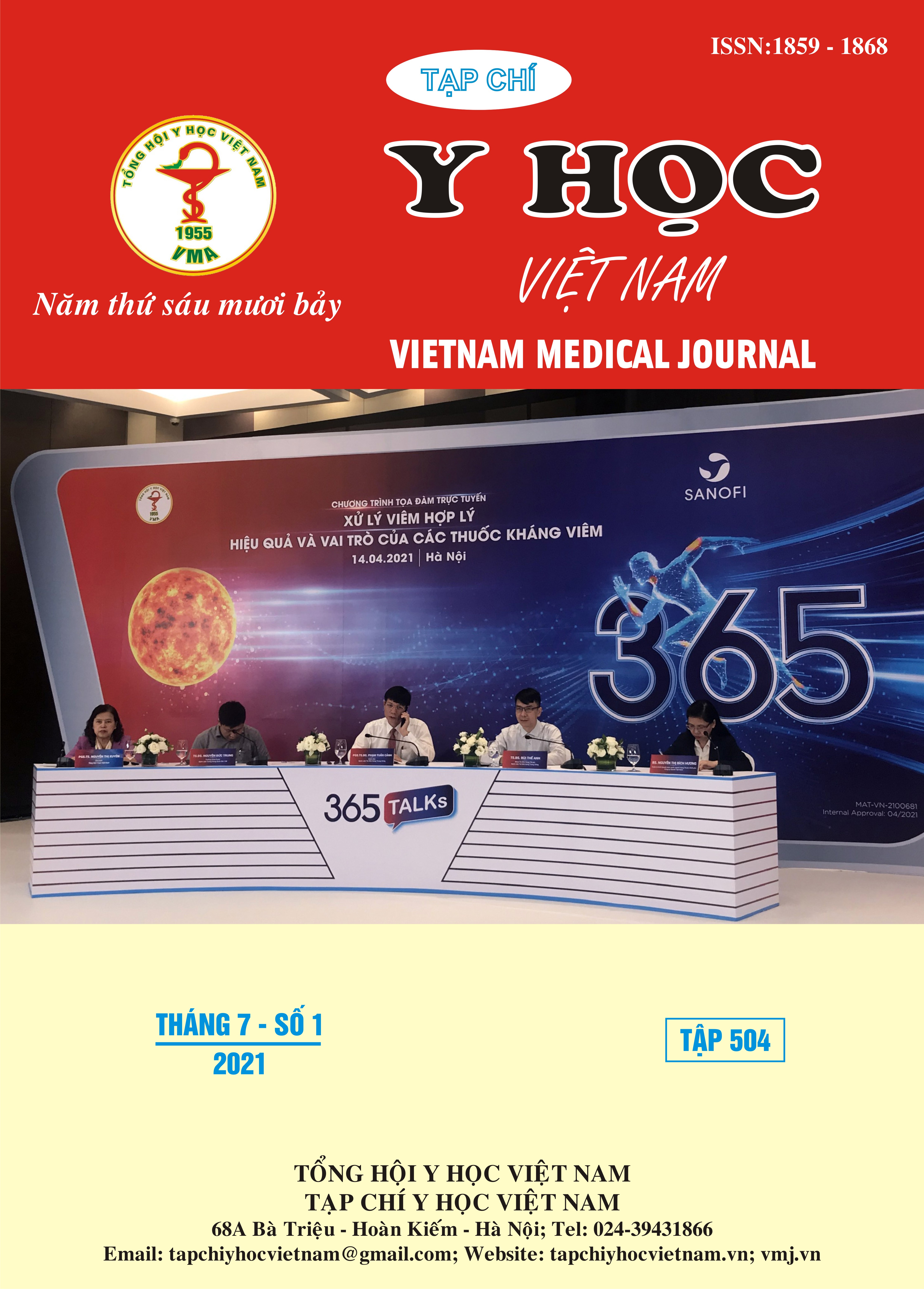CLINICAL AND HISTOPATHOLOGICAL CHARACTERISTICS OF RECTAL CANCER PATIENTS
Main Article Content
Abstract
Objectives: Describing clinical and histopathological characteristics of rectal cancer patients at Viet Duc hospital. Subjects and methods: The descriptive cross-sectional study on 109 patients diagnosed rectal carcinoma and surgical treatment at Department of colorectal and perineal surgery, Viet Duc hospital from October, 2016 to May, 2019. Results: The average age of rectal cancer was 63.48 ± 12.22 (years old), mainly male, accounting for 66.97%; age group accounted for the highest proportion was from 60 - 69 with 33.94%. The main reason admitted hospital was bloody defecation (82.57%). The average time to detect the disease was 3.72 ± 4.20 (month), mainly patients with early detection of the disease in the first 3 months accounted for 66.06%. Mainly, patients had symptoms of bloody defecation, accounting for 90.83%, weight loss accounted for 39.45%. Mass-ulcer type (40.37%), rectal adenocarcinoma type (87.16%) accounted for the main proportion, most tumors had a medium differentiation (83.49%). Most had not had regional lymph node metastasis (59.63%). The invasive stage of T3 rectal cancer accounted for the main proportion (68.80%). Conclusion: The prevalence of rectal cancer was mainly male, the average age was 63.48 ± 12.22 (age). The main reason admitted hospital was bloody defecation (82.57%). The time to detect the disease was mainly in the first 3 months. Symptoms of bloody defecation (90.83%), weight loss (39.45%). Mass-ulcer type (40.37%), rectal adenocarcinoma type (87.16%) accounted for the main proportion, most tumors had a medium differentiation (83.49%). Rectal cancer without regional lymph node metastasis (59.63%). The invasive stage of T3 rectal cancer accounted for the main proportion (68.80%).
Article Details
Keywords
clinical charcteristics, histopahological charcteristics, rectal cancer
References
2. Mai Đình Điểu (2014), Nghiên cứu ứng dụng phẫu thuật nội soi trong điều trị ung thư trực tràng, Luận án Tiến sĩ, Đại học Y dược Huế.
3. Quách Văn Kiên (2019), Nghiên cứu ứng dụng phẫu thuật nội soi bảo tồn cơ thắt trong ung thư trực tràng giữa và dưới, Luận án Tiến sĩ, Đại học Y Hà nội.
4. Phạm Cẩm Phương (2013), Nghiên cứu hiệu quả của hóa xạ trị tiền phẫu trong điều trị bệnh ung thư trực tràng giai đoạn xâm lấn, Luận án Tiến sỹ Y học, Trường Đại học Y Hà Nội.
5. Lê Quốc Tuấn (2020), Đánh giá kết quả phẫu thuật cắt đoạn và nối máy trong điều trị ung thư trực tràng giữa và thấp, Luận án Tiến sĩ y học, Trường đại học Y Hà Nội.
6. Freddie Bray, Jacques Ferlay, Isabelle Soerjomataram, et al. Global Cancer Statistics 2018: GLOBOCAN Estimates of Incidence and Mortality Worldwide for 36 Cancers in 185 Countries. Ca Cancer J Clin (2018); 68: 394–424.
7. American Joint Committee On Cancer. AJCC Cancer Staging Manual Seventh Edition (2010): 143-164.
8. Jin C. Kim, Chang S. Yu, Seok-B Lim, et al. Outcomes of ultra-low anterior resection combined with or without intersphincteric resection in lower rectal cancer patients. Int J Colorectal Dis (2015): 1-11.


